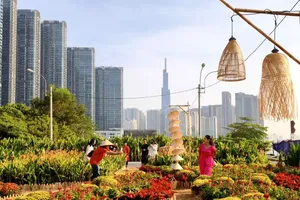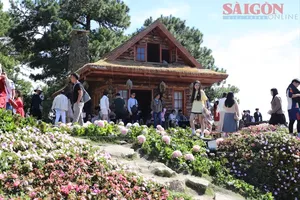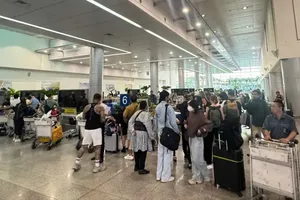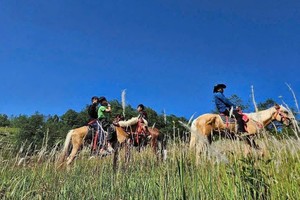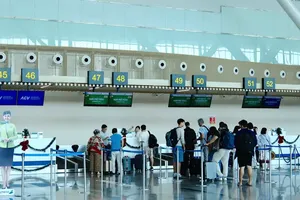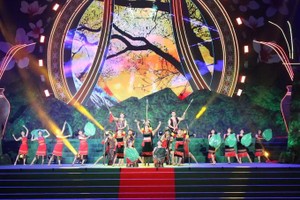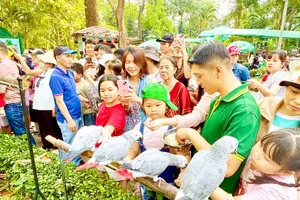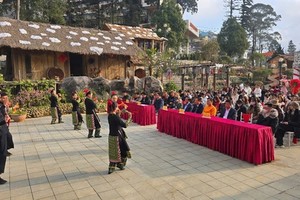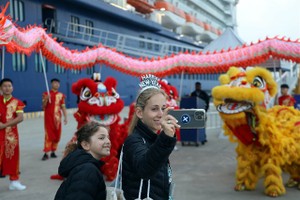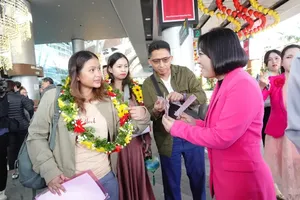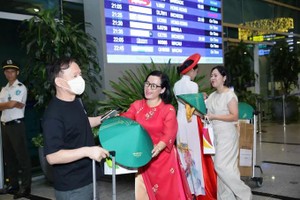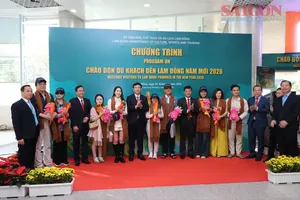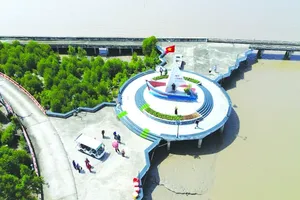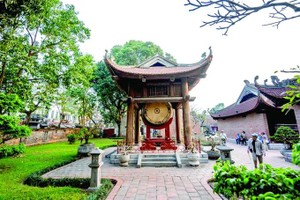
The February 24 event saw the presence of Politburo member Tran Quoc Vuong, permanent member of the Secretariat of the Communist Party of Vietnam Central Committee (CPVCC) and head of the CPVCC’s Inspection Commission.
According to the plan, the site will cover five communes in Son Duong district and one in Yen Son district with a core area of 2,500 hectares.
Investment will be mobilised from all possible resources, including the State budget, tourism development support fund, organisations, businesses and other economic sectors to develop tourism infrastructure, restaurants, hotels and homestay services, especially in Tan Trao, Minh Thanh, Trung Yen communes of Son Duong district.
The site is expected to welcome 1.5 million visitors, including 2,000 foreigners, by 2025, and 2 million holidaymakers, including 35,000 international tourists, by 2030. Revenue from tourism at the site is hoped to exceed 600 billion VND (26.3 million USD) in 2025 and 1.65 trillion VND (72.4 million USD) five years later.
Speaking at the function, Vuong described Tan Trao as one of the most important revolutionary bases in the nation’s history in the 20th century.
The master plan aims to develop Tan Trao into a leading revolutionary, historical and cultural tourism centre in the northern mountainous region and the country as well, Vuong said.
He urged local authorities to build specific plans to implement the plan effectively and encourage investors to carry out projects at the site, ensuring the preservation of cultural and historical values.
On the occasion, the province launched a patriotic emulation campaign and a New Year tree planting festival.
Earlier, Vuong offered incense at Lan Na Nua, where late President Ho Chi Minh lived and worked from late May 1945 to August the same year. The official also presented gifts to families who contributed to the revolution in Tan Trao commune and planted a commemorative tree at Tan Trao communal house.
Tan Trao, known as Vietnam’s revolutionary cradle, was once the home of President Ho Chi Minh and Party central agencies in the period before the success of the August Revolution and in the resistance war against French colonialists.
It was the venue for many historic events leading up to the August Revolution victory, including the Congress of People’s Representatives chaired by President Ho Chi Minh on August 16, 1945 to decide the destiny of the nation.
According to the plan, the site will cover five communes in Son Duong district and one in Yen Son district with a core area of 2,500 hectares.
Investment will be mobilised from all possible resources, including the State budget, tourism development support fund, organisations, businesses and other economic sectors to develop tourism infrastructure, restaurants, hotels and homestay services, especially in Tan Trao, Minh Thanh, Trung Yen communes of Son Duong district.
The site is expected to welcome 1.5 million visitors, including 2,000 foreigners, by 2025, and 2 million holidaymakers, including 35,000 international tourists, by 2030. Revenue from tourism at the site is hoped to exceed 600 billion VND (26.3 million USD) in 2025 and 1.65 trillion VND (72.4 million USD) five years later.
Speaking at the function, Vuong described Tan Trao as one of the most important revolutionary bases in the nation’s history in the 20th century.
The master plan aims to develop Tan Trao into a leading revolutionary, historical and cultural tourism centre in the northern mountainous region and the country as well, Vuong said.
He urged local authorities to build specific plans to implement the plan effectively and encourage investors to carry out projects at the site, ensuring the preservation of cultural and historical values.
On the occasion, the province launched a patriotic emulation campaign and a New Year tree planting festival.
Earlier, Vuong offered incense at Lan Na Nua, where late President Ho Chi Minh lived and worked from late May 1945 to August the same year. The official also presented gifts to families who contributed to the revolution in Tan Trao commune and planted a commemorative tree at Tan Trao communal house.
Tan Trao, known as Vietnam’s revolutionary cradle, was once the home of President Ho Chi Minh and Party central agencies in the period before the success of the August Revolution and in the resistance war against French colonialists.
It was the venue for many historic events leading up to the August Revolution victory, including the Congress of People’s Representatives chaired by President Ho Chi Minh on August 16, 1945 to decide the destiny of the nation.

